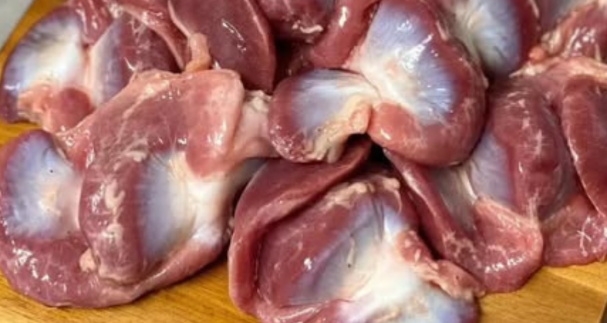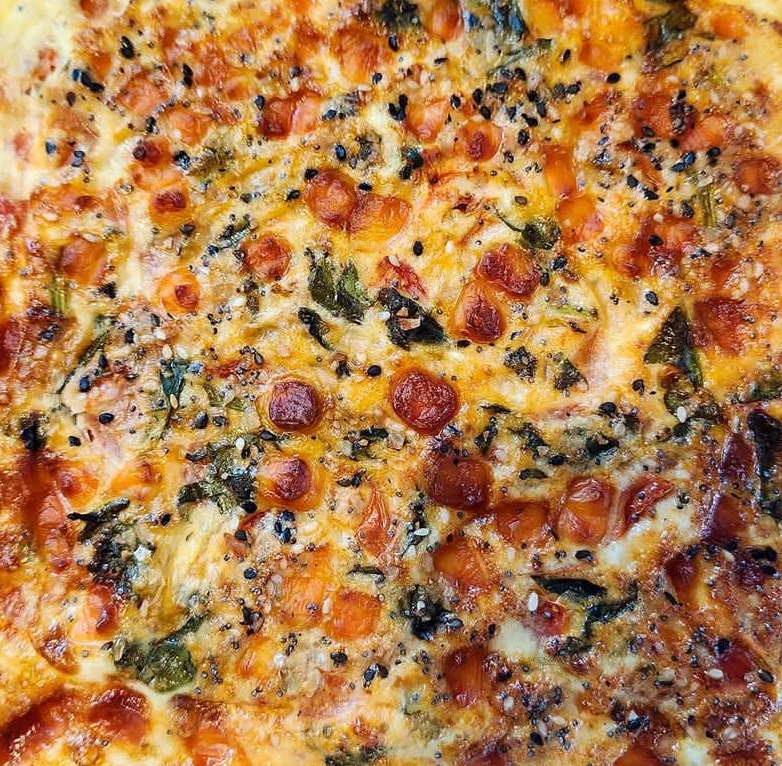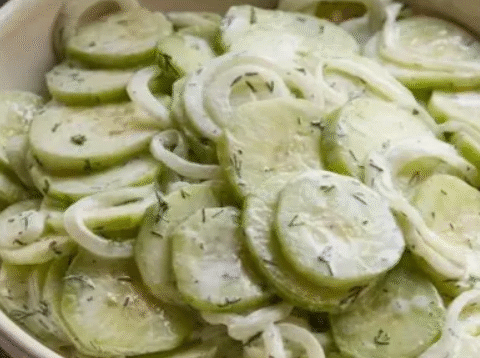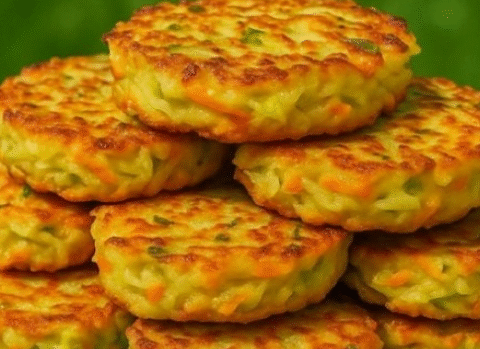Have you ever walked past chicken gizzards in the grocery store, glanced at them, and thought “meh, not for me”? What if I told you that these little entrails could be nature’s most affordable superfood—you know, the kind that fills you up, supports your immunity, boosts your energy, and nourishes your body in more ways than one, all without breaking the bank?
Yes, I’m talking about chicken gizzards. They might not be glamorous. They might not be on every menu. But they’re loaded with nutrition: protein, iron, B12, zinc, phosphorus, and so much more. And if you ate them regularly, you might not need certain supplements, because real food often does the job better. So roll up your sleeves, sharpen your knives (or at least your appetite), and let’s dig in to why gizzards deserve a place at your table—for flavor, for health, and for long-term vitality. 🌟
In this article, we’ll cover:
- What chicken gizzards are and why they’re nutritionally impressive
- The key nutrients inside them and what those nutrients do for your health
- How to safely select, store, and cook gizzards
- Practical recipe ideas and tips from top chefs
- Nutrition versus supplements: what you might replace or reduce when eating gizzards
- Common concerns and how to address them
- FAQs to answer all the burning questions you might have
What Are Chicken Gizzards?
A chicken gizzard is a muscular organ found in the digestive tract of birds. Chickens (and many other birds) don’t have teeth; instead, they use their gizzard to grind up food (often with the help of small ingested stones). The walls of the gizzard are very strong, fibrous, and fortified with connective tissue. That’s part of what gives them their signature chew and texture.
While some people may find them unusual, in many culinary traditions—West African, Southeast Asian, Latin American—they are prized. They’re often inexpensive, widely available, and versatile.
Why “Muscular Organ” = Nutrient Dense
- High in protein: muscles are made for force, and that requires protein machinery.
- Mineral rich: to maintain strong connective tissue and metabolism.
- Often made up of tissues that are less used in mainstream meat cuts—so less competition on price, more “bang for buck”.
Key Nutrients in Chicken Gizzards & Their Health Benefits
The following table details nutrient content in a standard serving of cooked chicken gizzards (100 grams) and outlines what those nutrients do for your body:
| Nutrient | Amount per 100 g cooked gizzard | Health Benefit |
|---|---|---|
| Protein | ~30 g | Essential for building and repairing tissues, producing enzymes and hormones, supporting muscle mass. High satiety value. ⚙️ |
| Iron (Heme) | ~2.5–3 mg | Critical for oxygen transport, preventing anemia, maintaining energy levels. More bioavailable heme iron than plant sources. |
| Vitamin B12 | ~1.5–2 µg | Supports nerve function, red blood cell formation, preventing B12 deficiency (often rare in omnivores, more in vegetarians/vegans). |
| Zinc | ~4 mg | Cofactor in immune system, wound healing, DNA synthesis, taste, smell. |
| Phosphorus | ~200–250 mg | Bone and teeth health, energy metabolism (ATP), kidney function, acid-base balance. |
| Selenium | ~30–35 µg | Antioxidant cofactor (glutathione peroxidase), thyroid health, immune defense. |
| Riboflavin (B2) | ~0.5–0.7 mg | Helps convert food to energy, supports skin, vision, and the nervous system. |
| Calories | ~190–220 kcal | Good energy without an overload of fat; lean source of calories largely from protein. |
| Fat | ~8–9 g (mostly unsaturated + some saturated) | Needed for hormone production, cell membranes; helps absorption of fat‑soluble vitamins. |
| Cholesterol | ~370–400 mg | Used to build cell membranes and produce certain hormones; moderation is key especially for those with heart/lipid concerns. |
What These Nutrients Add Up To
- Energy & vitality: The high protein + iron combo helps reduce fatigue and supports stamina.
- Strong immunity: Zinc, selenium, and B vitamins are central players in immune system regulation.
- Healthy blood & oxygen transport: B12 + iron support red blood cell production.
- Bone health: Phosphorus + moderate amounts of protein help build and maintain skeletal structure.
Health Tips & Safety Considerations
Choosing High‑Quality Gizzards
- Buy fresh gizzards from a reputable butcher or grocery store; they should smell clean (not sour or “off”).
- Look for good freezer practices if buying frozen: vacuum sealed or in clean sealed packs, with minimal freezer burn.
- Color should be uniform (deep purplish‑red before cooking), no slimy texture.
- Organic or free‑range options may reduce exposure to certain additives, antibiotics.
Cleaning & Preparing Safely
- Wash your hands thoroughly before and after handling raw gizzards.
- Rinse gizzards under cold water; cut away any yellow lining or fat if desired (but many nutrients are near those surfaces).
- Use separate cutting boards to avoid cross‑contamination with vegetables or ready‑to‑eat foods.
Cooking Methods to Preserve Nutrients & Flavor
- Slow simmering (e.g., in soups, stews, braises) helps tenderize without hardening.
- Sauté or stir‑fry with acidic ingredients (e.g. vinegar, lemon juice) helps break down toughness.
- Pressure cooker or Instant Pot can reduce cooking time while keeping nutrients intact.
- Avoid overcooking, which can destroy some B vitamins.
When It Might Be a Concern
- High cholesterol content means moderation may be needed for people with hyperlipidemia or heart disease—consult with a healthcare provider.
- Potential for heavy metal accumulation in organ meats—not common in gizzards, but sourcing matters (environment, feed). Use trusted sources.
- Allergic or dietary restrictions: not suitable for vegetarians or vegans; sometimes animal organ meats may cause digestive upset in sensitive people—start small.
How Chicken Gizzards Can Replace or Supplement What You Might Be Taking
Many people rely on supplements for certain nutrients. Let’s look at some common ones, and whether chicken gizzards could help you reduce or avoid them, under proper diet and guidance from a health professional.
- Iron supplements: If you have iron deficiency or borderline low iron, regular consumption of gizzards (heme iron = easily absorbed) can help maintain or build up iron stores.
- Vitamin B12: Especially helpful for people who eat some animal products but maybe not enough red meat or fish; gizzards provide B12 naturally.
- Zinc supplements: For immune support; gizzards are a rich dietary source.
- General protein powders or shakes: Whole‑food sources like gizzards provide protein plus a broad nutrient spectrum—not just isolated amino acids.
Of course, if you have diagnosed deficiencies or medical conditions, don’t stop prescribed supplements without consulting a doctor. But including gizzards in your diet might reduce your reliance on certain supplement products, especially general multivitamins or mineral pills.
Cooking & Recipe Ideas from the Experts
To make sure your gizzard adventure is tasty, here are suggestions from professional chefs plus a few home‑friendly recipes:
Chef Gordon Ramsay’s Braised Gizzard with Herbs
Chef Gordon Ramsay often emphasizes balancing texture and flavor. His approach to gizzards: braise them gently with herbs, aromatics, and a bit of stock until silky‑tender. Finish with fresh parsley and lemon zest to cut through richness.
Chef Bobby Flay’s Spicy Grilled Gizzards
Bobby Flay would marinate gizzards in a spicy rub (paprika, cayenne, garlic), grill them quickly over high heat until charred on the outside but still juicy inside. Serve with chimichurri for brightness.
Chef The Pioneer Woman (Ree Drummond): Comfort‑Style Stewed Gizzards
Ree Drummond loves comfort food. Her version: stewed gizzards with tomatoes, onions, carrots, and potatoes. Simmer slowly until everything melds together, season simply with salt, pepper, and thyme. Serve over rice or with crusty bread.
Chef Ina Garten’s Elegantly Sautéed Gizzards
Ina Garten might sauté cleaned, small‑sliced gizzards in butter and garlic, deglaze with white wine, add a touch of Dijon mustard, finish with fresh herbs. Elegant but easy.
Simple Home Recipe: Gizzard Stir‑Fry
- Sliced gizzards, thinly cut onion, bell pepper, garlic, soy sauce, and a dash of ginger.
- Cook over high heat briefly after par‑cooking (or pressure‑cooking) until just tender.
- Serve over brown rice or noodles with green onions.
Nutrition and Health Benefits Table
Below is a detailed table summarizing benefits, related nutrients, daily value % based on a 2,000‑cal diet, and suggestions for daily intake of gizzards.
| Benefit | Key Nutrients Responsible | Percentage of Daily Value (100 g cooked gizzard) | Suggested Serving Size & Frequency |
|---|---|---|---|
| Muscle / Tissue Repair | Protein, B12, Iron | Protein ≈ 60‑70% DV; B12 ≈ 80‑100% DV; Iron ≈ 15‑20% DV | 100 g, 2‑3 times per week |
| Immune System Support | Zinc, Selenium, B vitamins | Zinc ≈ 35‑40% DV; Selenium ≈ 50‑60% DV | 100 g weekly, more if you feel run down |
| Healthy Blood & Energy | Iron, B12, Riboflavin | B12 provides full DV; Iron + B2 ≈ 20‑30% DV together | 100 g every few days for those prone to anemia |
| Bone and Metabolic Health | Phosphorus, Protein, Selenium | Phosphorus ≈ 30‑40% DV | 100 g two to three times per week |
| Antioxidant & Thyroid Support | Selenium, B12 | Selenium around 50‑60% DV | 100 g per week |
How Much: Portions & Frequency
- A standard cooked portion: about **100 to 150 grams** (≈ 3.5 to 5 ounces). That gives you the nutrient values above.
- For someone healthy: **2‑3 servings per week** can confer many of the benefits discussed.
- If you have higher demands (exercising, recovering, pregnant, iron‑deficient), adjust upward under guidance; perhaps 4‑5 times weekly in smaller portions.
Comparison: Gizzards vs Supplements vs Other Meats
Gizzards vs Supplements
- Supplements usually isolate one nutrient; whole food gives a synergistic mix that supports absorption and reduces risk of imbalance.
- Supplements may cause gastrointestinal upset in some; whole food tends to be gentler.
- Supplement quality varies; food has more predictable risk when sourced well.
Gizzards vs Other Organ Meats
- Compared to liver: liver is even richer in certain vitamins (A, D), but also higher in some compounds (e.g. vitamin A) that could be excessive if eaten too often. Gizzards are more modest in those.
- Compared to heart: heart is more fatty and rich in CoQ10; gizzard is leaner, denser in connective tissue protein.
Gizzards vs Regular Chicken Breast / Thigh
- Higher in minerals and B12 than white meat.
- Less fat than dark thigh cuts (depending on how you cook them).
- Different texture—chewier—but with good cooking methods that becomes an advantage (mouthfeel, satisfaction).
Internal Links & Further Reading
For those who want to explore more about similar topics, I recommend:
- Healthy Meat Choices: What to Pick and Why
- Boosting Iron Naturally: Foods That Help
- Vitamin B12 Sources You Should Know
Frequently Asked Questions (FAQs)
- Are gizzards safe to eat regularly?
Yes, when properly cleaned and cooked, gizzards are safe. As with all organ meats, source them from healthy, well‑raised chickens to minimize contaminants. Moderation is advised due to cholesterol content. - Do gizzards contain harmful cholesterol?
Yes, they do have high cholesterol (≈ 370‑400 mg per 100 g). However, dietary cholesterol affects individuals differently. If you have high cholesterol or cardiovascular risk, consult your physician. For many, the benefit from nutrients outweighs occasional cholesterol intake within a balanced diet. - How should I cook gizzards so they’re not tough?
Tenderizing is key: slow cooking, pressure cooking, simmering, or marinating. Cutting them into smaller pieces helps. Avoid over‑high heat without moisture; that tends to toughen them. - Do I need to eat them often to get the benefits?
You don’t need them every day. Even 2‑3 servings per week can make a difference in protein, iron, B12, and mineral status for many people. - Can pregnant women eat gizzards?
Generally yes—since gizzards are rich in iron and B12, both of which are important in pregnancy. Ensure they are well‑cooked to avoid bacterial risk. Also ensure overall diet meets other pregnancy needs (folate, calcium, etc.). - What about vegetarian or vegan alternatives?
Since gizzards are animal organs, vegetarians and especially vegans would not consume them. Plant foods like legumes, fortified cereals, nutritional yeast, mushrooms, spinach, and pulses can help with protein and iron, though absorption differs. Supplements/fortified foods may be needed for B12. - Do organ meat tastes strong or gamey?
Gizzards have a stronger texture and slightly more interesting flavor than plain white meat, but not as “gamey” as say liver. Texture is chewier. Seasoning, marinating, herbs, acids (vinegar/lemon), and combining with more neutral ingredients helps mellow flavor. - Can children eat gizzards?
Yes, in moderation. Small, tender pieces are easier. Ensure fully cooked. Be sure they are introduced gradually if texture or flavor is new. They can provide good nutrients, especially iron, for growing children. - Is there a risk of parasites or bacteria?
Raw or undercooked poultry organs can carry pathogens. Always cook to safe temperatures (at least 165°F / 74°C internal temp). Proper handling, cleaning and cooking are essential. - How do gizzards compare environmentally?
Using organ meats reduces waste by consuming more parts of the animal, which improves resource efficiency. They generally have lower cost per nutrient. If sourcing from pasture‑raised or local farms, you may also support more sustainable practices.
Bottom Line & Take‑Home Messages
Here’s what to remember:
- Chicken gizzards are affordable and nutrient‑dense—protein, iron, B12, zinc, phosphorus, selenium, and more.
- They can help fill gaps in your diet that some supplements aim to cover—with whole food benefits.
- Proper sourcing, cleaning, and cooking are critical for safety and tenderness.
- Include them 2‑3 times per week (or adjust based on your needs) as part of a varied, balanced diet.
- If you have specific health conditions (cholesterol, heart disease, iron overload etc.), check with a medical professional.
So next time you’re in the meat aisle, consider picking up those gizzards. With the right preparation, they might just be the low‑cost superfood your health has been quietly craving. 🍽️
Written by Cooking with Expert Chef Gordon Ramsay (or Chef Bobby Flay, Chef The Pioneer Woman, Chef Ina Garten)—a collaborative exploration to help you eat well, feel strong, and enjoy every bite.






